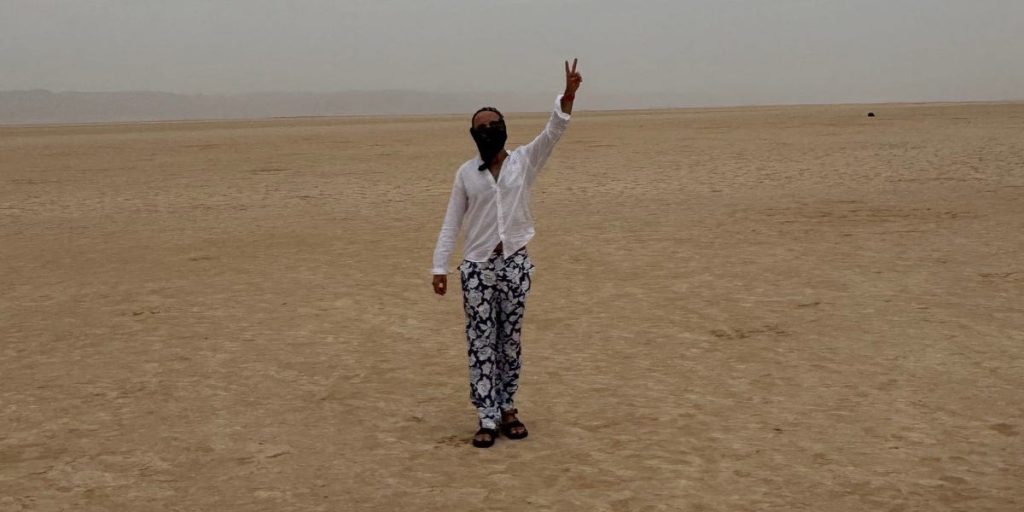When my partner and I began planning a couple’s trip to Tunisia, we decided to do something different. Instead of turning to travel sites, we let AI take the lead.
Recently, I’ve outsourced a lot of my life to ChatGPT — from work projects to personal errands. So, I thought, why not travel planning, too?
ChatGPT has always been my top choice, but my partner wanted to see what Claude—the one she likes the most—would plan for our Italian holiday.
We wanted to see which AI bot planned the best trip. But through this friendly competition, we learned just how differently my partner and I like to travel.
On paper, we had two very different trips
We didn’t want chaos, so we set limits. We picked our timeline and the cities in advance: Tunis, Tozeur, and Hammamet.
Then we handed the itinerary-building over to the bots, with each AI designing one full day in each city.
Of course, there were overlaps, but they each produced different trips.
ChatGPT, for example, came back with what felt like a movie script. Tunis started with a sunrise walk through Sidi Bou Saïd, pastries and mint tea in hand, followed by a whirlwind through the Medina and a dramatic half-day at the ruins of Carthage. Then, in Tozeur, it pulled the cinematic card with “Star Wars” filming sets in the desert, and camel rides across dunes at sunset. Hammamet, meanwhile, was framed as a finale of seaside lounging, alternating between couscous feasts and beach walks. It was ambitious, colorful, and a little chaotic — but also thrilling.
Claude’s version was slower and more contained. In Tunis, it recommended a guided food tour, before sending us to Carthage for a more paced, historical visit. In Tozeur, it skipped the desert dash altogether, focusing instead on the Medina and a relaxed afternoon by an oasis. It also added two important cultural pit stops we hadn’t considered. Hammamet was stripped back to a cultural visit to the Kasbah and an early dinner overlooking the water. Less cinematic, more logical.
Reality quickly tested both AI itineraries
Of course, we then needed to build our own itinerary, taking activities recommended by both lists.
Related stories
ChatGPT’s ambitious Tozeur day nearly flattened us. The long drive was far from the breezy jaunt it implied, and when we finally got close, a sandstorm had blocked the highway. “The Star Wars” sets were out of reach, proof that no itinerary can control nature.
Still, other parts of ChatGPT’s plan delivered — like Sidi Bou Saïd, where whitewashed walls and cobalt-blue shutters glowed in the sun as we sipped mint tea above the sea. It felt like stepping into a painting.
Claude’s food tour in Tunis was a big highlight. We enjoyed sesame-coated pastries as we drifted through narrow streets, pointing toward stalls and corners we would never have found on our own.
Claude also surprised us with two inspired detours: the Great Mosque of Kairouan and El Jem amphitheater. Both were extraordinary stops, layered with history and stillness.
Surprisingly, the AI bots revealed something deeper
As the trip unfolded, it became clear we were not just comparing AI bots. We were surprised to see our own travel personalities reflected back at us.
ChatGPT’s energy mirrored mine: scattershot but adventurous, willing to gamble on exhaustion for the sake of a memory. Claude’s calm matched my partner: thoughtful, practical, deliberate.
If we are scoring, ChatGPT delivered the better memories. Claude delivered comfort and culture. But neither really won.
What they gave us was a way of traveling that reflected us back at ourselves — two personalities and two rhythms woven into one trip.
Tunisia was beautiful, bewildering, and slightly AI-engineered. It proved that the best journey is never about choosing one itinerary over the other but about learning how we move through the world together, even when the paths are different.


